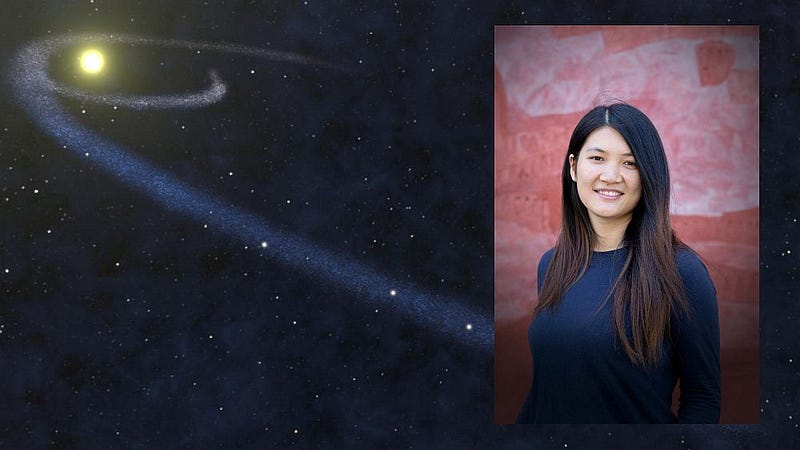The Enigma of Galactic Missing Matter: A Recent Breakthrough
Written on
Chapter 1: The Galactic Missing Matter Mystery
The enigma of missing baryonic matter in the universe has perplexed astronomers for years. Recently, a student astronomer named Yuanming Wang has made strides toward unraveling this cosmic puzzle.

Wang's discovery of hydrogen snow clouds could provide answers to the long-standing question of missing galactic matter. For decades, scientists have known that dark matter and dark energy comprise around 95 percent of the universe's total mass, leaving only five percent accounted for by baryonic (normal) matter.
Despite extensive observations, when astronomers tally the mass of visible stars and gas clouds, they find only half of the baryonic matter believed to exist in the universe. "We suspect that a significant portion of the ‘missing’ baryonic matter is hidden in the form of cold gas clouds either within or between galaxies. This gas remains undetectable through conventional means since it does not emit visible light and is too cold for radio astronomy methods," explains Wang, a doctoral candidate at the University of Sydney.
Section 1.1: The Search for Missing Matter
To tackle the mystery, Wang and her team devised a novel approach. They employed the Australian Square Kilometre Array Pathfinder (ASKAP) radio telescope located in Western Australia, which allowed them to gather crucial data and explore this elusive galactic matter.
“ASKAP’s unique capability lies in its broad field of view, which is facilitated by its specialized chequerboard Phased Array Feed (PAF) receivers. This technology generates 36 simultaneous beams, enabling quick surveys of extensive sky areas, positioning ASKAP among the fastest survey radio telescopes globally,” reports the Commonwealth Scientific and Industrial Research Organisation (CSIRO).
The researchers utilized distant galaxies as ‘scintillating pins’—shimmering lights that act as beacons. During their observations, they identified five twinkling radio sources in the far-off universe, akin to stars twinkling in the night sky.
Video description: This video discusses the recent findings about missing galaxies and the implications of hydrogen snow clouds in the universe.
Section 1.2: The Discovery of Cold Gas Streams
Through their extensive research, the team uncovered the source of the twinkling—an unseen stream of cold gas located just 10 light-years from Earth. This gaseous formation stretches approximately 10 trillion kilometers long and 10 billion kilometers wide, yet its mass is comparable to that of the Moon.
"We are still uncertain about the nature of this peculiar cloud, but it might be a hydrogen ‘snow cloud’ that has been perturbed by a nearby star, resulting in a long, slender gas clump," states Dr. Artem Tuntsov of Manly Astrophysics.
Researchers propose that a significant amount of the missing baryonic matter in the universe could be composed of these hydrogen snow clouds, which are nearly impossible to detect using traditional techniques. They remain hopeful of locating more hydrogen snow clouds across the cosmos, potentially illuminating the riddle of the galactic missing matter.
Chapter 2: The Implications of the Discovery
Video description: This video explores the ongoing mystery of missing matter in the universe and how new discoveries might help solve it.
James Maynard, the founder and publisher of The Cosmic Companion, shares insights from Tucson, where he lives with his wife Nicole and their cat, Max.
If you found this article engaging, consider joining The Cosmic Companion Network for our podcast, weekly video series, informative newsletter, and news updates on Amazon Alexa!